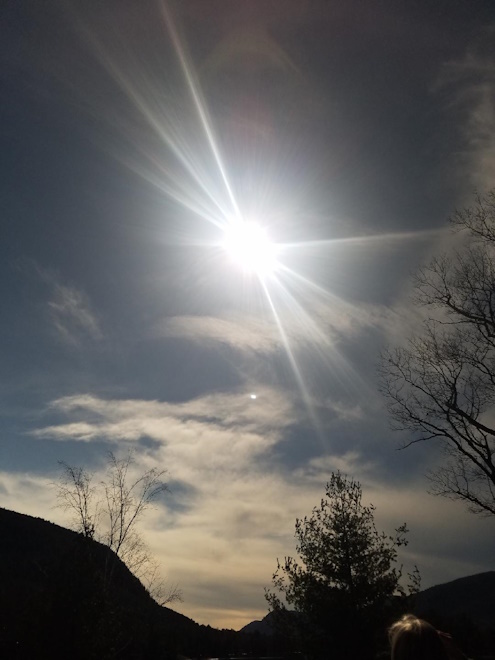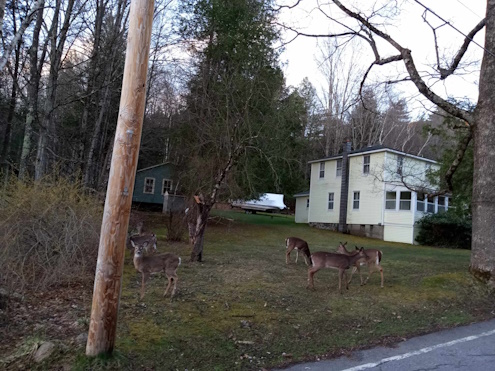Town of Fort Ann
Washington County
Wilderness Rescue: On June 4 at 2:05 p.m., Ray Brook Dispatch received a call from a subject with an unstable ankle injury in the Shelving Rock area. Forest Rangers Donegan, Geyer, and Hess, along with Fort Ann EMS, reached the 23-year-old from Saratoga Springs and splinted her ankle. Rescue crews packaged the subject into a litter and brought her to a waiting ambulance at 4 p.m.
May Dresden Town Board Meeting Minutes
The draft minutes for the regular May meeting of the Dresden Town Board have been posted on the town’s website.
Dresden Sewer Boards May 2024 Meeting Minutes
Here is a link to the draft minutes of the May meeting of the Sewer Board.
The preliminary engineers report has still not been released to the public.
LGPC Moves Forward with Test of Aquatic Herbicide ProcellaCOR

A well-attended rally in opposition to the application of ProcellaCOR in Lake George was held at 8:30 am on Tuesday, May 28, 2024 outside the office of the Lake George Association. The Lake George Association has opposed the use of ProcellaCOR in Lake George.

Later in the day on Tuesday, the Lake George Park Commission rejected the Lake George Associations’ offer to pay the full cost of hand-harvesting in the two areas where the state wants to apply ProcellaCOR this year. Both sites are in the northern Lake George basin. One site is off of Huletts Landing.
News Channel 13 of Albany covered the Lake George Park Commission hearing here.
Memorial Day: 2024

Today we honor and give thanks for all Americans who died while serving and protecting America. We celebrate the lives and sacrifice of our fallen.
I hope we remember to thank God today that we have such patriots who gave up their lives because they believed that America is our home, our land, the heart of who and what we are as not only a nation among others, but a key part of our very identity.
“May God support us all the day long, till the shades lengthen and the evening comes, and the busy world is hushed, and the fever of life is over, and our work is done. Then in His mercy may He give us a safe lodging, and a holy rest and peace at the last.”
New Bond Act Website
Governor Hochul has announced the launch of an enhanced website for the Clean Water, Clean Air and Green Jobs Environmental Bond Act, which was approved by voters in 2022.
The site is part of New York State’s commitment to a transparent process that empowers the public to track and learn about Bond Act investments statewide. New resources and features on the website:
An interactive statewide map to access facts about Bond Act-funded projects;
a funding finder tool; eligibility guidelines; and
Bond Act funding allocations based on project category.
Please encourage our state, local and school officials to apply for grants. It’s easy to spend other people’s money, the real work is bringing money into the town to benefit everyone.
Casino to Open Soon

The Casino will be closed Memorial Day weekend, but it is getting ready to reopen soon. Stay tuned for the date and hours.
We can’t wait to welcome you!
LGLC’s Sucker Brook Preserve, in Putnam, Now Accessible by Boat

The new seasonal dock, now open to the public, at the Lake George Land Conservancy’s Sucker Brook Preserve.
A seasonal dock is now available on a first-come, first-served basis at the Lake George Land Conservancy’s Sucker Brook Preserve, in Putnam.
The Sucker Brook Preserve is made up of multiple protected properties, including those previously known as the Gull Bay Preserve (protected in 2003) and Last Great Shoreline Preserve (protected in 2009). In total, the Sucker Brook Preserve encompasses a total of 1,078 acres and more than 6 miles of trails. Now you can visit by boat.
Most trails at the Sucker Brook Preserve are considered moderate, with many relatively flat and easy stretches. There are also challenging, though short, sections, notably at the southern end of the Orange Trail, and the Red Trail-South. In addition, because these are active beaver ponds, water levels vary throughout the seasons and years, which may impact trail conditions.
Happy Mother’s Day

To all our mothers, you’ll never get the thanks and recognition you truly deserve and even if you did, you know that’s not what you want. You want the best of life and love and hope and eternity for your children and family. Fortunately, you have a mighty, mighty power over the outcome. And you will, until the day you die. Please use it.
Dresden Sewer Boards April 2024 Meeting Minutes
April Dresden Town Board Meeting Minutes
The draft minutes for the regular April meeting of the Dresden Town Board have been posted on the town’s website.
April in Huletts
The Solar Eclipse from Huletts

A picture taken this afternoon in Huletts of today’s solar eclipse.

It was a beautiful sunny day with a wonderful view of the eclipse for the hearty folks who watched it today from Huletts.
The next time a total solar eclipse will be visible again from the contiguous United States will be August 22, 2044. Today’s event is now preserved here!
Thoughts on April
I’ve always thought April is such a good month. The worst of winter is usually over, and the world begins to wake up again. While it can be a little damp and rainy at times – the old axiom; April showers bring May flowers always holds true.
When we were children, we would always come to Huletts for our Spring Break. My grandmother would recite Longworth’s, Paul Revere’s Ride, from memory because it happened on the evening of April 18, 1775. Both my grandparents would tell us that rote memorization was a big part of their education as children. They would recite poems that were emblazoned in their memories as children.
Work would begin again on things that couldn’t be done in the winter and the lake’s ice would usually melt in April. (I always remember the sound the ice would make as it creaked and groaned in the winter.) Birds would start singing in the morning again as they returned from their winter migration.
My parents and my grandparents would always talk about the ideas of community, faith and family. I’ve sensed a greater longing for community and family in these tumultuous times where there seems to be a greater loneliness and anxiety loose in the world.
These discussions on the ideas of faith, family, and community still resonate with me today. My grandfather would say that the most important commission in the bible was Christ’s admonition to Peter; “to strengthen the brethren” which is also, at times, translated as “strengthen your brothers.” (Luke 22:32)
Hopefully, you have weathered the winter and April finds you enjoying the longer days and soon to be warmer weather. May you hear birds singing in the morning as we all look forward to returning to Huletts.

